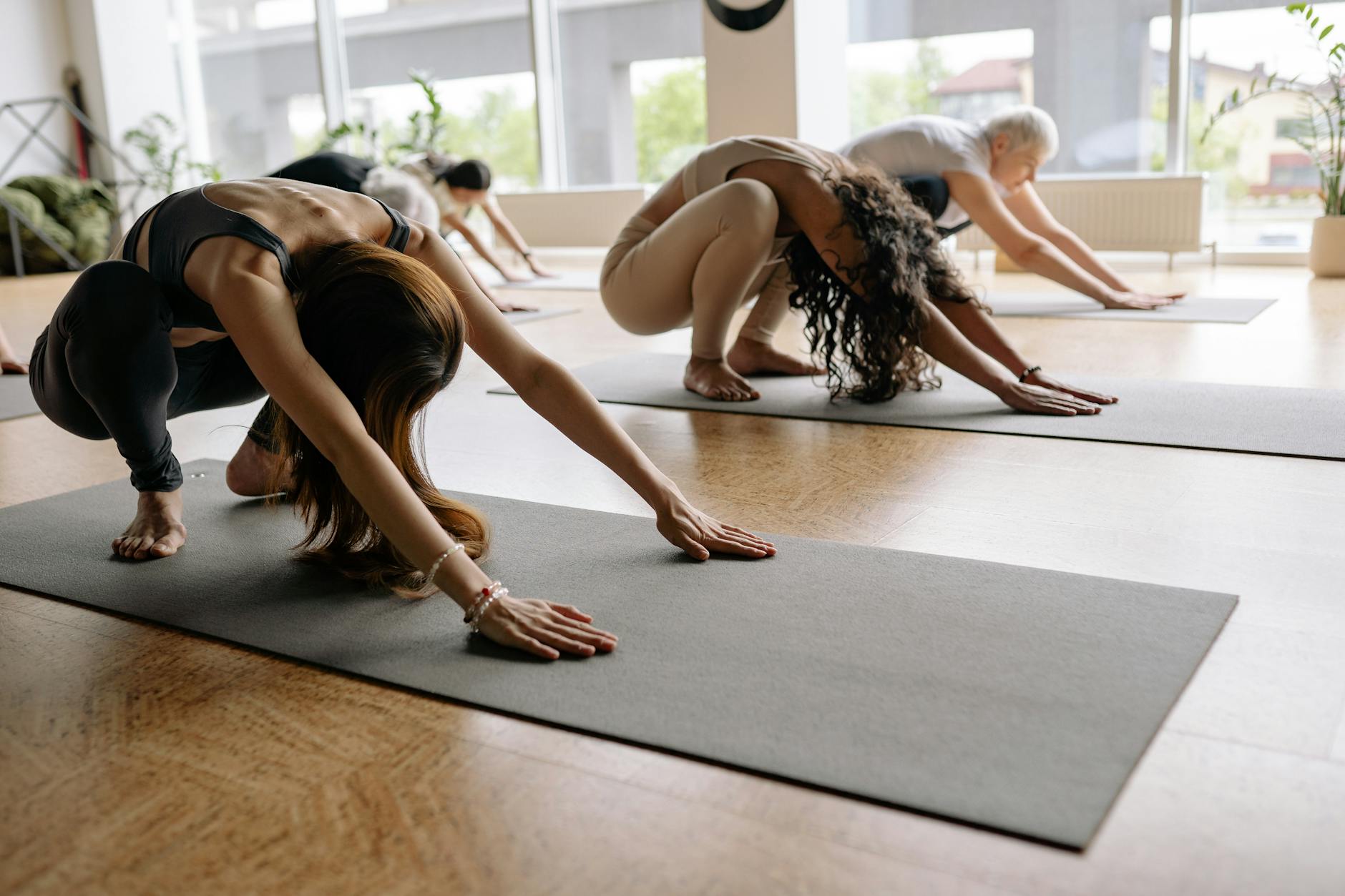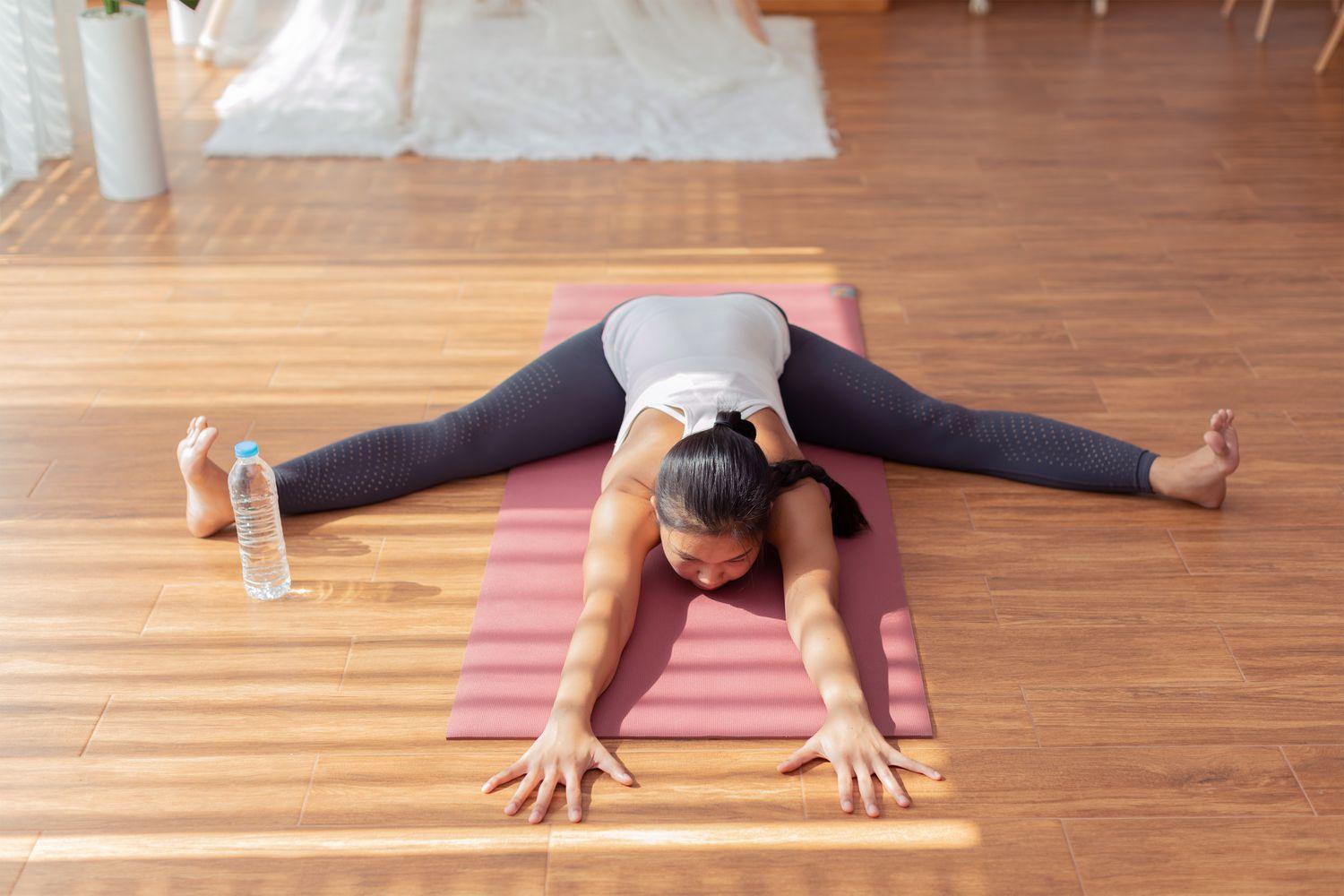Yoga offers beginners a gentle way to improve flexibility, build strength, and relax their minds. You don’t need to be an expert or overly flexible to start, simple poses allow anyone to get started. Even if you’ve never done yoga, beginner-friendly postures provide a safe, approachable foundation for your practice.
Why Yoga is Ideal for Beginners
Starting yoga is not just about fitness; it’s a full-body and mind experience. The physical benefits, such as improved posture and balance, are just the beginning. For beginners, yoga helps reduce stress, increases mindfulness, and enhances body awareness.
Going slow and focusing on simple poses ensures a safe practice while setting the stage for long-term wellness. Yoga’s inclusivity means you can adapt poses to your body based on flexibility and strength, making it accessible to all fitness levels.

5 Foundational Yoga Poses for Beginners
Beginner poses may seem simple, but they establish a strong foundation for balance, strength, and focus. Below are essential yoga poses perfect for anyone starting this journey.
Mountain Pose (Tadasana)
Mountain Pose is often the starting point for many yoga sequences. It seems simple but is essential for understanding alignment.
- How to Do It: Stand tall with feet together, arms at your side. Distribute your weight evenly across both feet and engage your core. Keep your spine straight and your chin parallel to the floor.
- Benefits: This pose improves posture and body awareness. It helps you focus on breathing while building balance.
Downward-Facing Dog (Adho Mukha Svanasana)
One of the most recognized yoga postures, Downward-Facing Dog stretches the entire body.
- How to Do It: Start on all fours, tuck your toes, and lift your hips toward the ceiling. Your body should form an inverted V-shape. Keep your legs as straight as possible and let your heels work toward the floor.
- Benefits: This pose stretches hamstrings, calves, and shoulders while strengthening arms and legs. It also boosts circulation and energizes the body.
Child’s Pose (Balasana)
This resting pose is a gentle stretch for the back and hips, perfect for relaxation.
- How to Do It: Kneel on the floor, lower your hips back toward your heels, and stretch your arms forward. Let your belly rest on your thighs and your forehead touch the floor.
- Benefits: It calms the mind, relieves tension in the back, and encourages deep breathing.
Cat-Cow Pose (Marjaryasana-Bitilasana)
This dynamic sequence pairs two poses to increase spinal flexibility and warm up the body.
- How to Do It: Start on your hands and knees. For Cow Pose, inhale as you arch your back, letting your belly drop toward the ground. For Cat Pose, exhale as you round your spine and tuck your chin.
- Benefits: This sequence improves spinal mobility, reduces tension in the neck and back, and promotes smoother movement.
Warrior I (Virabhadrasana I)
Warrior I builds strength and bolsters confidence through its powerful stance.
- How to Do It: Begin in a lunge position with your left foot forward and right foot angled slightly. Raise your arms overhead, keeping your gaze forward and your spine straight.
- Benefits: Strengthens the legs and core while improving balance. The pose also stretches the chest and opens the hips.
The Benefits of Yoga Poses for Beginners
Improved Flexibility and Balance
Yoga poses like Downward Dog and Warrior I stretch tight muscles and enhance balance. Over time, they improve range of motion in the hips, shoulders, and spine, reducing tension and preventing injuries.
Stress Reduction and Mental Clarity
Yoga places strong emphasis on mindful breathing and relaxation. Child’s Pose, in particular, soothes the nervous system and promotes a sense of calm. Practicing yoga regularly helps manage stress and improve focus, leaving you feeling mentally refreshed.
Building Strength Safely
Unlike high-impact workouts, yoga builds functional strength through controlled movements. Poses like Downward Dog and Warrior I tone muscles gently, without the risk often associated with heavy lifting.
Tips for Beginners Starting with Yoga
Starting yoga can feel overwhelming, but a few practical steps will ensure progress while keeping the experience enjoyable.
Focus on Breathing
Yoga emphasizes synchronization between breath and movement. Practicing deep, steady breathing can improve focus and relaxation. Think of your breathing as the anchor for your practice.
Use Props for Support
Don’t hesitate to use yoga props like blocks, straps, or blankets. They help maintain proper alignment and make poses more accessible if you’re struggling with flexibility.
Start Slow and Be Consistent
Rather than forcing yourself into advanced poses, focus on consistency. Practicing 10–15 minutes a day is more effective than occasional long sessions. Regular practice builds strength and flexibility over time.
Conclusion
Yoga for beginners is an excellent way to kickstart a healthier lifestyle. Foundational poses like Mountain Pose and Downward Dog improve flexibility and strength, while Child’s Pose and Cat-Cow offer relaxation and spinal health. The mental clarity gained from yoga is just as valuable as the physical benefits.
Starting slow, using props, and focusing on breathing will make your yoga journey enjoyable and sustainable. Embrace these beginner poses with an open mind, and you’ll discover the profound benefits of yoga both on and off the mat.
